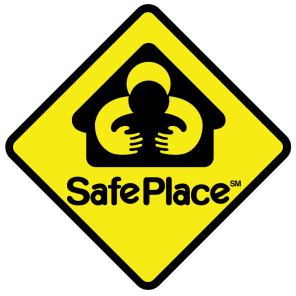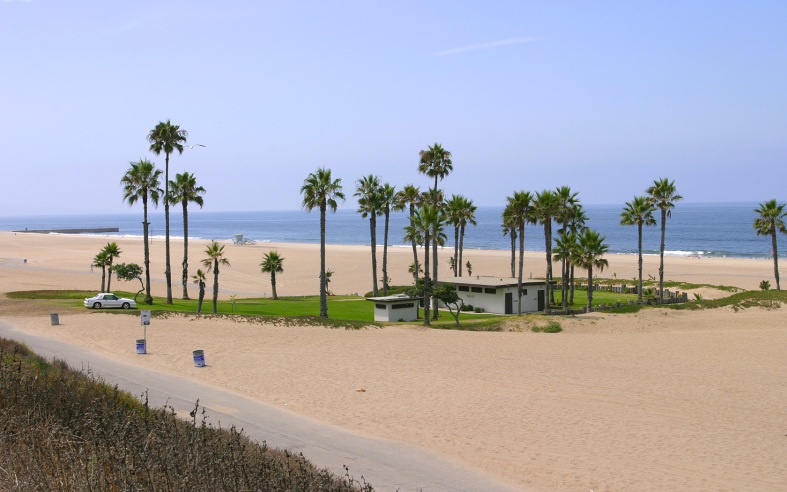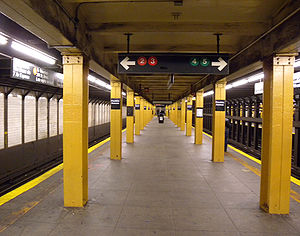Thanks for reading the Introductory post in the Choosing Change series.
If you've seen any of the Star Wars™ movies more than likely you'll remember the scene depicted in the photo above from Star Wars Episode IV: A New Hope. Obi-Wan Kenobi has just rescued an injured Luke Skywalker from the dreaded sand people and R2-D2, sensing he has located the right person in Obi-Wan, relays a message of distress from a desperate Princess Leia who conveys the recognizable words: "Help me Obi-Wan Kenobi, you're my only hope."
Princess Leia, who was in crisis mode, sought out the one person who she knew she could count on to provide assistance to help her through her ordeal. Likewise, when we're experiencing some form of distress, especially when we need to make important decisions that will impact our lives and the lives of others, then feeling safe and being safe are critical ingredients and necessary experiences that will help us immensely. Here's how.
When human beings are in danger, in crisis, are threatened or are traumatized, we possess a "hard-wired" or pre-programmed survival response that causes us to respond in one of three ways: to fight, take flight or to freeze. This "hard-wired" internal process in our brain that helps to keep us alive and automatically motivates us to act is called the Amygdala system.
Young, Klosko and Weishaar (2003) wrote in their book Schema Therapy (they wrote a great readable version called Reinventing Your Life: The Breakthrough Program to End Negative Behavior and Feel Great Again) how the Amygdala system appraises danger in our environment and triggers automatic physiological responses within us which are intended to prompt us to create or get to safety for our own sense of well-being.
What's interesting is that these biological and emotional responses within us typically work and occur faster than our cognitive or thought processes. That could be good if we're prompted to escape the danger that's threatening our safety but it could also work against us if our emotional reaction(s) cause us to misinterpret data and information that our brain needs to process accurately so we can make the best decision and choice that we need to make. Said simply, emotional overload may cause us to have "tunnel vision." Connected to our emotion, tunnel vision, while it helps us to react and focus on obtaining safety for ourselves, may also cause us to leave out vital and relevant information that could also help us, especially in our decision making process when change is involved.

So what's the best way to ensure that our emotions don't get the best of us when we need to make a decision that's crucial for our well-being? Well, when you're in crisis, or feeling fearful, or feeling threatened and you feel the need to defend yourself, most likely your greatest need could be Safety, or to have a safe place created for you or by a safe person who practices behaviors that facilitate safety.
When we have a safe place, we're apt to lower what Drs. John and Julie Gottman call an "emotional flooding" episode (or diffuse physiological arousal or "DPA"). When our emotions diffuse or "subside" and we're in a calmer state, we tend to be in a better position to process information in order to decide what's essentially best for ourselves. Let's explore this further.
When we experience an emotional flooding episode, our body and right brain automatically defaults to survival mode, and we're prone to automatically make decisions from that aroused state (remember, tunnel vision). The problem is that some of these decisions made in this aroused state of mind may not be the best ones for us because they tend to leave out the left brain function (that logical part of us), which we need to be involved in any form of decision making process. Being safe and feeling safe helps to calm us down or "bio-balance" ourselves, which helps the two hemispheres of our brain to work more efficiently.
But this only happens if we're feeling safe. Safety matters! Much of the work that occurs in my office commences when the person that I'm sitting with feels safe. Equally, people in your presence will have better right-left brain experiences, which tends to lead toward them making better and informed decisions, when they feel safe with you. This poses a question: Have you thought about what would it take for you to become a safe person that others could turn to when they're feeling distressed? Could you see yourself providing a reasonable response of hope that a distressed person needs? But I digress...
So having a safe place to go to, or a safe person to turn to, or a safe process to implement could not only make a difference when you're feeling emotionally flooded, but generally, the people or the processes that you invite into your life could help you to calm down, which helps you to assess a situation accurately, which is helpful and necessary, especially when you're considering making a (major) change in your life. But if you don't have a safe person like Obi-Wan Kenobi hanging around in your life when you need him most, how about creating a safe place for yourself?
I'm not a trauma treatment specialist, but there's a therapeutic practice called EMDR (Eye Movement Desensitization and Reprocessing) that encourages people to develop within themselves safe places whenever they feel stressed, unsafe, triggered emotionally and could experience an emotional flooding episode. This article from Good Therapy.com defines a safe place in the following manner: "A “Safe place” may be thought of as an emotional sanctuary where a person can internally go to recover stability when feeling stressed." I find this brief article very valuable because it provides eight practical steps (please read them when time permits) which could help us to create a personal safe place when we most need it in our effort to "come to our own assistance."
So if Obi-Wan Kenobi, Yoda or Darth Vader (er, wrong last person there) or that safe person isn't available to you when you're distressed and feeling upset, I'd like to suggest that your Safe Place could only be a few deep breaths away that you could access with a few blinks of your eyes.
Like some Safe Places that I read about, yours may even incorporate the helpful the energy field entity called "the Force" that Luke, Leia, Obi-Wan and Yoda spoke about. If not, hopefully it will include some, if not all of the elements (Earth, Wind, Fire, Water and the Sky) and also the use of your five senses as well (Sight, Touch, Sounds, Hearing and Touch) which when combined could usher you into a psychologically safe place where your right-left brain connection helps you to facilitate an experience where you ultimately feel safe, protected and cared for.
Here's a picture of my Safe Place: Dockweiler State Beach, just south of Marina Del Rey (in California) and north of Manhattan Beach.

This became a favorite place of mine as I'd park my car on Vista Del Mar, where this picture is taken, walk down the incline and sit on the beach where I could feel the sand, hear the sea gulls, be soothed by the crashing waves on the shore, smell the sea salt, feel the ocean breeze (hear an occasional plane taking off from LAX) and feel the heat of the sun on my skin. I've seen dolphins swim by and its one of the most peaceful places I could imaging being at. In a moment, in the blink of an eye, I'm there, and it helps to immediately facilitate the internal calm I need to re-engage my left brain, which as mentioned, will help me to make the right choice at the right time to achieve the right outcome that I need.
So I have a few questions for you now: Where is your Safe Place? Who's part of it? When are you prone to go there or access it in your effort to come to your own assistance? What elements have you incorporated into it? How does it help you (to feel calmer)? Is there a person involved? And do you incorporate any "spiritual disciplines" (ingredients or seeds like prayer, solitude, silence, reflecting meditation, etc.) into your safe place process? If so, have you noticed that you're able to make better decisions for yourself (and feel better about them) when you've accessed this naturally therapeutic place? How are you a safe person to others for their benefit?
Creating and operating from a place of safety is crucial to our brain, our body and our relationships when we experience change in our lives or when we're thinking about making significant or life changing decisions. When we've been thrust into a crucible, or feel like our hearts are ripped open like a shovel entering the soil, or if we feel we've been parsed and diced like vegetables, its the safe people, safe places and safe processes that when actuated, tend to determine what decision(s) we'll make and what outcomes we'll experience for ourselves.
This was no more truer in our lives than in 2008 when we lost our daughter Marissa in an automobile accident. In the hours (and subsequent days, weeks months and now years) after this tragic event, it was safe people from a local church who immediately showed up and provided meals for us for 4 months. It was the safe people that we didn't even know, who we eventually met and prayed for and with us, that helped to facilitate calm, comfort, understanding and peace. I knew this process worked for us because the safe experiences they facilitated helped Leslie and I "operate in our right mind" in light of our devastating experience. And it was the safe processes of psychotherapy that helped us all to feel, weep, think and act through the profound anguish and grief that accompanied our loss when we were catapulted into this devastating experience. Safe people and the processes they provided made all the difference with the decisions that followed in our lives. Like Princess Leia did and we experienced, I encourage you to reach out or call out to someone in your time of need when you need to feel safe.
I dare say that at some time in our lives we'll all need safe people who'll bring safe processes to us to help us experience the critical change agent called Safety. When change, conflict, danger, trauma, grief or any strong emotions (i.e., fear, shame or hopelessness) are evident in your life, then safety, security, stability, empathy and understanding tend to be critical ingredients and change agents that you'll want to access as soon as you could to help you to determine not only what to do next, but could determine how all the "passengers" you care about get there.
The addition of these characteristics, seeds or "intimacy needs" as I like to call them are delivered by others in moments of crisis (or accessed via your Higher Power) and will go a long way toward determining if and how successful you'll be, while also determining the direction you'll choose for yourself to experience safe outcomes in your life.
We'll come back to this image of a subway platform, where the trains travel in opposite directions in another post. For now, know that the experience (or lack of) Safety could determine which direction, what choices and subsequently what outcomes we'll make for ourselves and for those we love.

Thanks so much for reading these posts. Future posts on Change will be labeled “Choosing Change #2,” “Choosing Change #3,” “Choosing Change #4” and so on.
Also, as time permits, please visit the other blogs written by Dr Ken McGill: Daily Bread for Life and “3 – 2 – 5 – 4 – 24″ for additional information that could be helpful. I welcome your comments below or via email and your favorites, your retweets and your “+1’s” if you have a brief moment and find the information helpful. Again, it is my desire to provide the very best info for your consideration.
Dr. Ken McGill

No comments:
Post a Comment